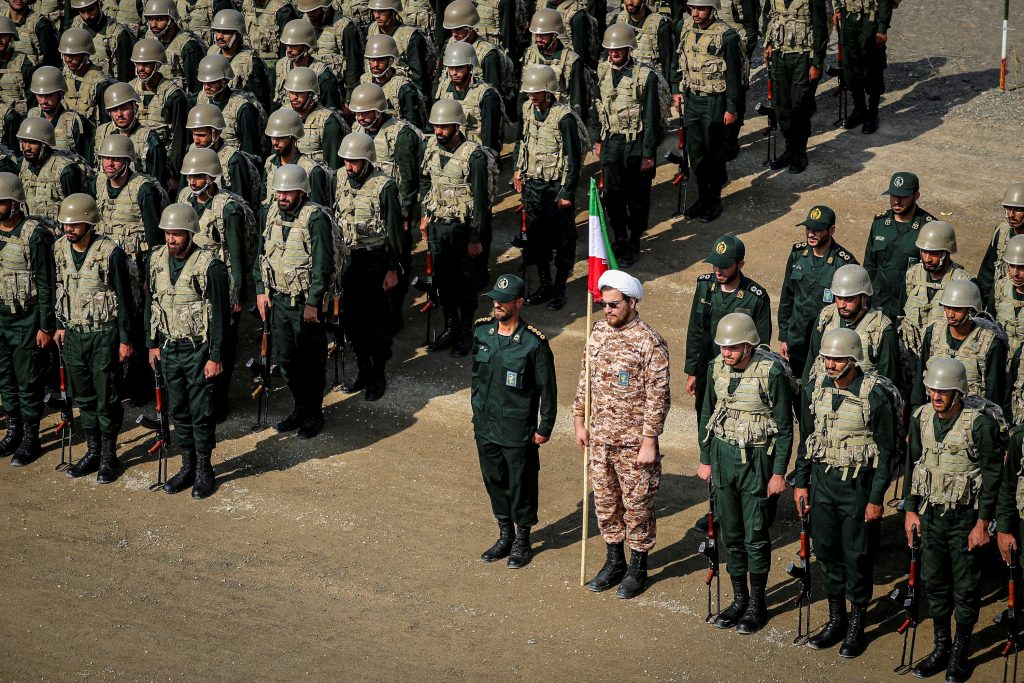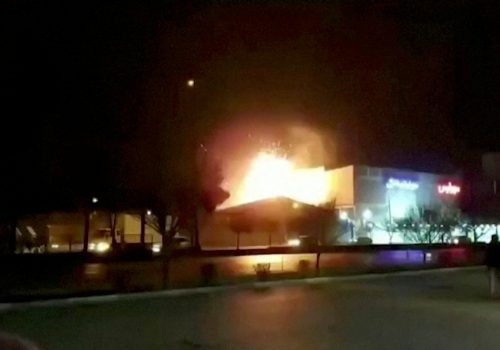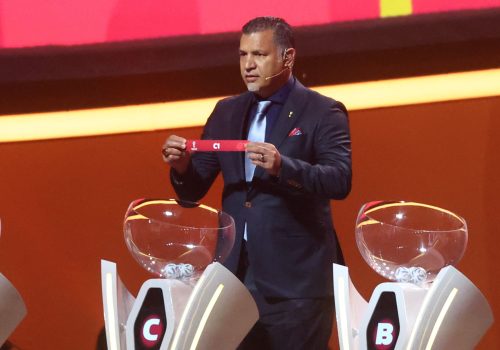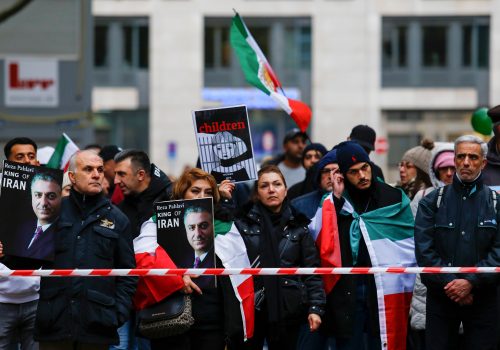Iran’s official version of Saturday’s events is fairly straightforward. Three armed drones penetrated Iranian airspace seeking to attack a “workshop,” but one of the drones was “destroyed by Iranian air defense” systems and the other two caught by “defense traps.” The incident happened in Isfahan, the third most populous city in Iran, located approximately two hundred miles south of Tehran. All told, the result was minimal damage to the roof of the “workshop.” But Iran’s attempts to minimize the strike should not obscure its potentially large ramifications.
No one has yet claimed responsibility for the attack and there is a reasonable chance that no one will—publicly. But multiple media reports are highlighting previous suspected Israeli attacks on Iran, a reflection of the long shadow war between the two countries, and other reports are already explicitly identifying Israel as responsible.
It is quite possible the “workshop”—which is probably an Iranian defense ministry ammunition facility—was not the target. Next to the warehouse is the Iran Space Research Center, an agency that has cooperated previously with the country’s ballistic missile program—and is sanctioned by the United States. Israeli journalist Barak Ravid on Sunday reported that Iran’s “missile program” was the target and according to a source, “four different areas in the building were accurately targeted and the goal was achieved.”
The attack happened around the same time as Iranian television said that an oil refinery fire had broken out in Tabriz, about three hundred miles northwest of Tehran, and not far away a 5.9 magnitude earthquake shook the country’s far northwest province of West Azerbaijan. At least one report claimed the Tabriz facility may also have been attacked by drones.
As more details about the attack emerge, the biggest unknown is how Iran views the impact of this incident and how it will respond. In trying to begin to determine that, three indicators are worth watching.
First, will the attacks change Iranian plans related to their military facilities? This is among the most difficult assessments for various intelligence agencies. But just as Iran has done with much of its nuclear program, a decision by Iran to immediately harden its military production and storage facilities—or to increase the pace or scale, or alter the location of those currently being built—would indicate that the attacks had modified the thinking of Iranian defense leaders. Tehran may now believe that current facilities are insufficient and at greater risk for future attacks than it views as acceptable.
Second, Iran’s official media statements notwithstanding, did the attack in fact cause physical destruction that impacts the country’s development, production, or storage capabilities of ammunition or ballistic missiles? Ravid’s reported statement that the drone mission was achieved obviously runs counter to Iran’s claim of minimal damage. Which is true? That will be tough to ascertain without more details as to the specific target. But a clear decrease in the development, production, or transfer of critical military hardware by Iran would be an indicator that the attacks had a bigger impact than Iran is letting on. Conversely, if things are largely business as usual, it might suggest that the attacks were ultimately not as successful as Israel hoped in destroying or significantly disrupting whatever the ultimate targets.
Of course, the potential indicators related to both Iranian planning and the physical destruction do not discount an alternative possibility. The attacks may be less about specifically eliminating Iran’s facilities at Isfahan and more about testing the capacity to use drones against a target and Iran’s responses to such an attack. It is worth noting, for instance, that the explosion in Isfahan was relatively small. If this was in fact an Israeli test run, we should expect that at some point in the future—whether a few months or a few years—Israel will stage an operation with similar characteristics but in a different city and against a different type of target.
Finally, is Iran taking steps that suggest it plans to retailiate? While Iran often views responding to attacks as necessary to restore deterrence, it is notoriously patient. As a result, the absence of an immediate response cannot be, by default, read as Tehran viewing the incident as insignificant. Just a few weeks ago, for example, Iranian President Ebrahim Raisi once again publicly promised to avenge the killing of Islamic Revolutionary Guard Corps Quds Force Commander Qasem Soleimani that occurred over three years ago. But while Iran has lethal drones, a response by it should not be expected to look exactly the same as the attack. Iran’s asymmetric efforts go back decades as Tehran often looks to execute terrorist attacks globally against Israeli or Jewish targets. In June of last year, Turkish officials thwarted an Iranian plot to attack Israelis visiting Istanbul. In 2012, Iran sought to assassinate senior Israeli officials in India and Kenya. And Iran’s most infamous terrorist attack occurred almost three decades ago in 1994, when it bombed a Jewish community center in Argentina, killing eighty five and injuring more than three hundred people.
There are other methods of responding, as well. Iran’s cyber capabilities have greatly improved, for instance, and its 2020 cyberattack against Israel’s water system highlights a possible alternative. Regardless of method, Iran undertakes significant time and effort developing its attacks. Thus, if Tehran expends the energy to advance one in response to this incident, it also suggests that Iran considers this drone attack more damaging than it is letting on.
The truth is, it is too early to say exactly how Iran views this attack—or what exactly it was designed to do. But while it will take some patience, looking for the aforementioned indicators will start to help answer these questions.
Jonathan Panikoff is the director of the Atlantic Council’s Scowcroft Middle East Security Initiative and the former deputy national intelligence officer for the Near East.
The views expressed in this publication are the author’s and do not imply endorsement by the Office of the Director of National Intelligence, the intelligence community, or any other US government agency.
Further reading
Mon, Jan 30, 2023
Experts react: What’s behind the drone strike on an Iranian military facility?
New Atlanticist By
We turned to our experts on Iran, Israel, and the region to help explain the dynamics at play—and what’s coming next.
Wed, Jan 11, 2023
Soccer players versus the IRGC. Who do the people of Iran choose?
IranSource By
Iranians know who their national heroes are.
Tue, Jan 24, 2023
Can Reza Pahlavi help unite the Iranian opposition? A hashtag is suggesting so.
IranSource By
An Iranian journalist started the hashtag #You_Represent_Me, which was quickly picked up by thousands of other Iranians, inside and outside the country, who used it to declare their support for Reza Pahlavi.
Image: Members of the Islamic Revolutionary Guard Corps (IRGC) attend an IRGC ground forces military drill in the Aras area, East Azerbaijan province, Iran, October 17, 2022. IRGC/WANA (West Asia News Agency)/Handout via REUTERS



